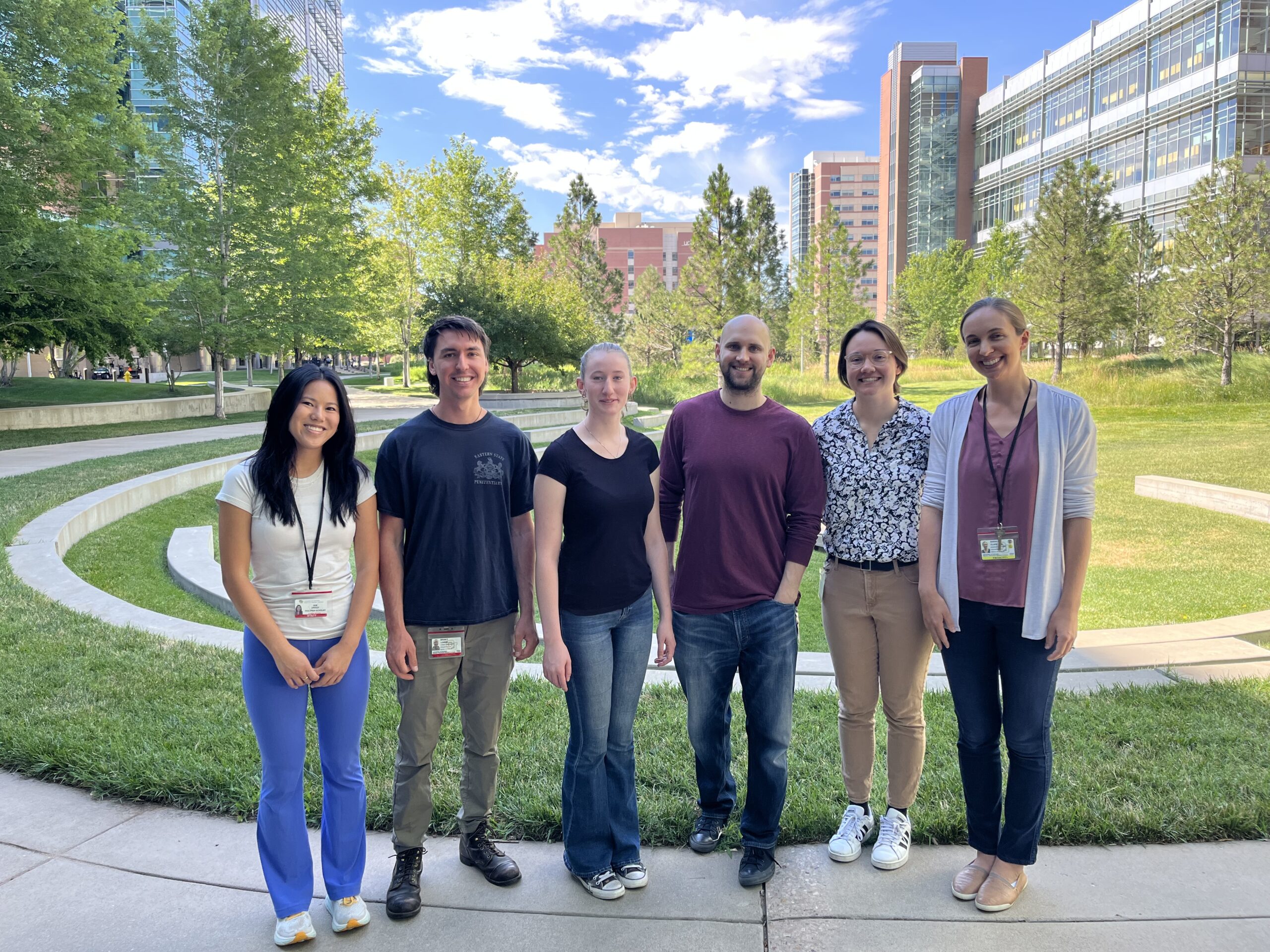Like many great organizations, Community College of Aurora (CCA) came from humble beginnings and an ambitious vision.

“We were called the college without walls,” said Dr. Mordecai Brownlee, the president of CCA. “We have photos of the admissions team being on a rotary phone with a 20-foot cord in someone’s living room. When the state didn’t give any money for a building, the founding members went and taught in open parks, daycare centers, libraries, fire stations, and the Air Force base. That’s where we come from.”
A lot has changed since 1983, the year the campus was founded. Now serving more than 5,500 postsecondary students and 5,400 high school students through concurrent, or dual, enrollment, CCA is embracing the infinite number of technological advances through its investments in Science, Technology, Engineering and Math (STEM) education.
Last year, CCA broke ground for a brand new, 55,000 square foot STEM center – the Center for STEM, Power Mechanics and Applied Technologies and BuildStrong Academy of Colorado. The college’s first new campus building in nearly two decades will have STEM classrooms, labs, and other innovative spaces when it opens in the fall of 2024.
“A brand new building and facility is a homage to those who sacrificed [in founding CCA],” said Brownlee. “The vision is alive and growing, and it’s just really cool to be able to be a part of that. We’re still going, and we still have a long way to go.”
The new building, which received a $70,000 grant from the Boettcher Foundation, reflects the significant push for STEM education and workforce development on a global scale. According to the National Science Foundation, between 2011 and 2021, the STEM workforce grew by 5.9 million, a 20 percent increase.
While there is no question that STEM is here to stay, there are questions regarding who has access to STEM learning opportunities, and who is benefitting from the movement.
Susan Young, the dean of academic success and STEM at CCA, recognizes the important role the college plays in ensuring all students have the opportunity to be a part of the STEM pipeline.
Currently, the gap between the demographics of CCA students and representation in STEM fields is vast. Sixty-five percent of CCA students identify as students of color, and 52 percent of attendees are first generation college students. In 2021, people of color comprised about 30 percent of the STEM workforce.
While growth and progress has been made, there is ample opportunity to close the gap, Young says.
While there are a plethora of potential solutions to the issue of representation in STEM, CCA is focusing on doing what community colleges do best: serving the needs of its community on multiple levels – individually, institutionally, and societally.
Empowering Individuals
Isaac Quinones, a CCA student pursuing an associate of science to become a dietetic nutritionist, thinks about his little brother when he thinks about the importance of STEM in elevating individuals.
“My younger brother is 11, and even though he’s not really involved in any activities related to robotics, he’s been messing around with little RC cars – rearranging the wiring, adding more wiring to it, putting lights on the cars, everything,” said Quinones. “I think he’s very interested in the STEM pathway, especially the engineering pathway.”
According to Young, many young people have the interest and aptitude for STEM-related fields, but often are unable to pursue the field due to a variety of barriers.
“There is a lack of STEM workforce and there’s certainly not a lot of diversity in the STEM workforce, so I think that what we can be doing here is helping students get into that pipeline, because for many students, the barriers are high,” said Young. “It could be their math level, it could be their math preparation, it could be money, it could be career opportunities, or not knowing what those opportunities are.”
While factors like a lack of financial resources can be a barrier to entering STEM fields, breaking down this barrier can have huge impacts when it comes to economic mobility for students and their families.
Anthony Alor, a computer science student at CCA, recognizes the opportunity pursuing engineering presents for him.
“I’ve always found hands-on activities, like designing and engineering-based stuff, really fun and entertaining, which made me want to stick with it,” said Alor. “I also think of it financially, because I know engineers get paid really well.”
STEM fields have the capacity to provide individual transformation, including economic mobility that Alor references. The investment in high-quality STEM facilities and programs serves as a foundation for transforming the CCA students’ lives.
Breaking Down Institutional Barriers
Beyond the impact that CCA’s STEM investment has on the lives of individuals is the institutional and industrial change it can create in the state of Colorado and beyond.
CCA serves as a springboard toward furthering education at four-year universities. Pathways at CCA enable students to enter bachelor degree programs they may not have had access to otherwise, shifting the demographic makeup of major educational institutions in Colorado.
Both Quinones and Alor both plan to transfer after they complete their associate degrees. Quinones hopes to attend the University of Northern Colorado to work towards becoming a dietetic nutritionist, while Alor aspires to enroll at CU Denver to further his engineering education.
While Colorado has one of the highest per capita levels of postsecondary education, a large portion of its educated population comes from out of state, while the percentage of Colorado high school students attending college is below the national average. In addition to this, Colorado lags in educating its Black, Latino, and Native American students.
CCA sees these numbers as an opportunity to change the landscape and become a bridge to connecting the students it serves with the infinite opportunities in STEM.
“With the growth that’s expected … in the STEM fields industries, we want to make sure that our students, our first-generation students, our immigrant students, are a part of that picture,” said Dr. Brownlee.
Societal Impact
CCA faculty and staff believe their investment in STEM education will also have significant impacts on more widespread, societal issues present in our world.
Melia Zepeda is a student in CCA’s Integrated Nursing Pathway Program, a pipeline for supporting students in attaining a bachelor of science degree in nursing through University of Colorado Anschutz. Zepeda is motivated by her personal experiences as a first-generation student of color to become a nurse that can support communities similar to those she is a part of.
“There are disparities in the healthcare system with how certain groups of people are treated versus others,” Zepeda said. “My whole goal as a nurse is to be the nurse that people deserve.”
Zepeda is already finding opportunities to use her knowledge of STEM to create impact. On top of being a student, Zepeda spends time as a robotics mentor for a team at a local high school in Denver’s Green Valley Ranch neighborhood.
Another student, Azul Bonilla Lopez, sees STEM as a way to positively impact worldwide issues associated with climate change and global warming.
“One of my life mottos is ‘be the change you want to see in the world’,” said Bonilla Lopez. “Growing up, I would learn in my science classes about global warming and climate change, and what we could do to help with that crisis. The more I learned about the engineering pathway, the more I realized I could use that to impact climate change.”
Bonilla Lopez is a first-generation student who comes from an immigrant family. Her next steps are to attend a four-year university to study either environmental or mechanical engineering.
The principle of relying on education as a means of changing the world is a common theme within the broader CCA ecosystem.
Thanks to the transformative instructional practices, high-quality educators, supportive community, and innovative facilities at CCA, students like Bonilla Lopez, Zepeda, Quinones, and Alor are definitely “getting it right.”
The personal transformation and societal impact of CCA’s STEM department will no doubt expand far beyond the walls of the college’s classrooms. Even in 2023, 40 years after CCA’s humble beginnings, the spirit of educating “without walls” remains alive and well.
That’s the Spirit of Boettcher.




